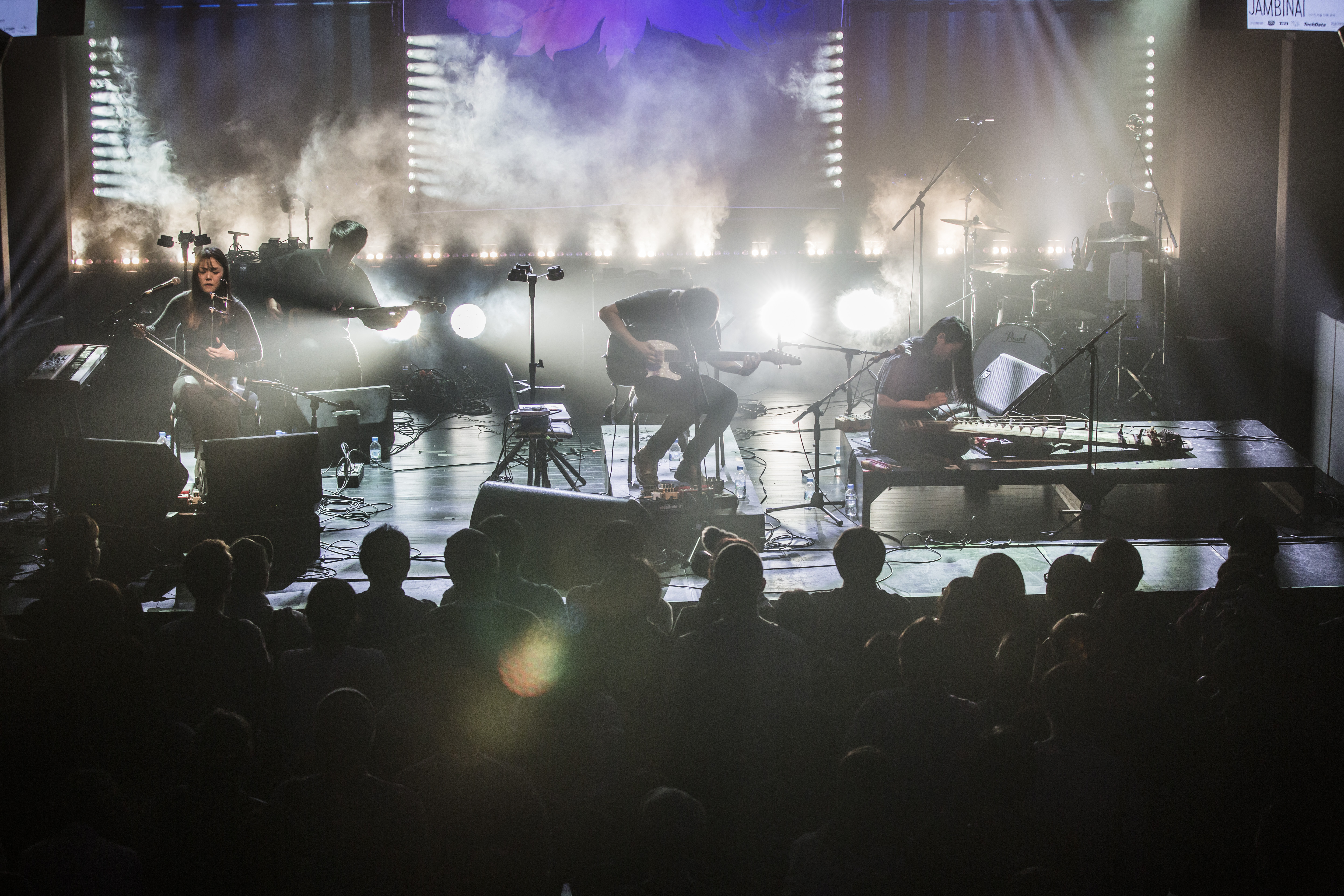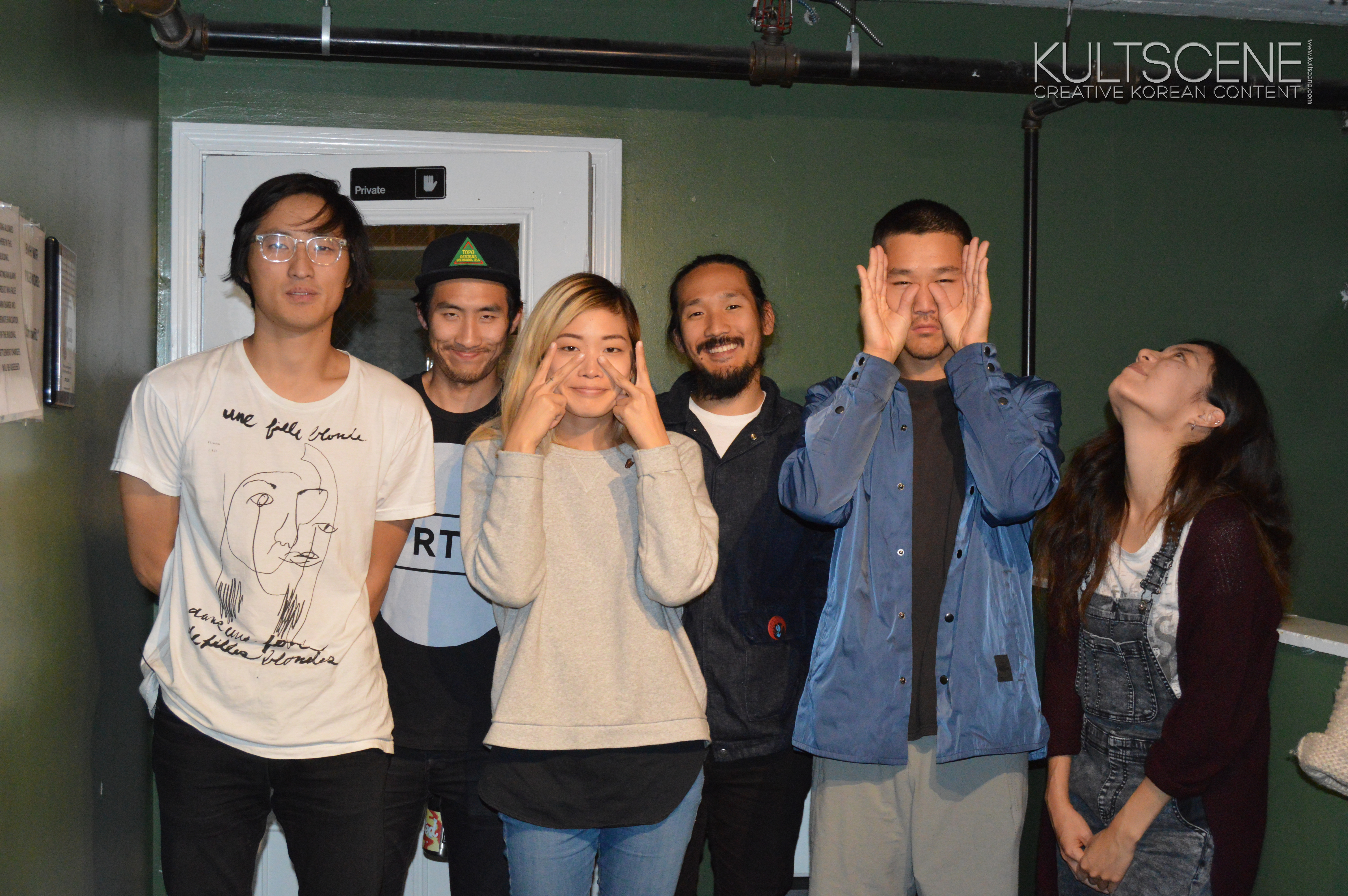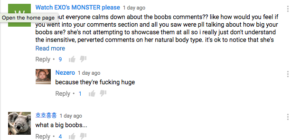Jambinai on blending Korean & western music styles to create unique post-rock
You may not know them yet, but Jambinai is a post-rock Korean indie band to take note of. The five-member group blends traditional Korean instruments with western rock to create hauntingly dramatic music. Inspired by the world around them, they’ve created a unique, experiential sound that sets them apart.
Though they’ve had countless acclaim in the past for their releases, Jambinai has never performed in New York City before. But on May 17, the quintet will head to NYC’s Le Poisson Rouge for their first ever Big Apple show.
Ahead of their NYC debut, Jambinai’s Lee Ilwoo and Kim Bomi did a Q&A with KultScene:
Thanks for taking the time to talk to KultScene. How’s everything going lately?
Lee Ilwoo: We are touring in Europe for a month and have a show everyday. It’s tough but really exciting.
You’re making your NYC debut next month. I know you’ve toured quite a bit, but how does it feel to be playing in New York?
Kim Bomi: I’m very happy. Because New York is the center of all culture, as everyone knows. So I’m looking forward to our first show in NYC.
LI: We have toured Europe several times, but this is our first time in NYC. So [I think that] just a few people are going to come our show. But we are going to do our best!
Any things you want to/do see while you’re here?
KB: I want to visit Blue Note [Jazz Club] again, personally. Actually, I went there seven years ago. I spent a lovely time there and I’ve never forgotten those memories. So I want to try again of possible. But I’m not sure because we don’t have much time. We have to move to Chicago the day after.
LI: After the show in NYC, we are going to have to head to Chicago immediately. So it’s so sad not to have some time in NYC.
You have a unique approach to post-rock that looks different from just about everything else coming out of Korea nowadays. How did Jambinai get started?
KB: When we first met, we just wanted to try make some new sounds. Because nowadays, Korea has so many bands who make some new blend [of] local music with western styles. But it’s not a good match for Korean traditional instruments. For example, in that music, Korean traditional instruments just follow or copy western [styles]. We thought about that, [and it’s] not good. So we talked about how can we find different way and better sound.
LI: I like post-rock music and I’ve [been] inspired from [it]. Some bands blend post-rock sound with violin, cello or other western classical instruments. It was so nice and fresh to me. Actually, I tried to blend Korean traditional instruments with rock sound so people listen to Korean traditional sounds, but I didn’t know how. But the bands who blend classical instruments with rock sounds gave me some ideas.
What’s your creative process like?
KB: In my case, playing the haegeum, I’m influenced by Ilwoo. Because he composes all [of our] songs first and then I have to arrange my part; [I] can blend good on songs [sic]. And sometimes I’m influenced by a movie or novel or other genres [of] music. Recently, I’ve read a novel. The name is “EXPANSE.” It’s [a] sci-fi novel. It was very interesting and I can use the feeling[s I felt from reading it] when I play.
LI: I’m inspired by many bands and Korean traditional music. Korean traditional instrumentation is really unique. By Western standards, some Korean traditional sounds are just noise or [have a] weird pitch. But that gives [me] many ideas to make us unique. And issues around me also inspired me.
“They Keep Silence” was one of NPR’s top songs of 2016, which the writer said it was because of the “righteous anger” the song evoked in relation to the Sewol Ferry, which was a national tragedy. Why do you think such a locally aimed song resonated with one of the US’s most prominent media outlets?
KB: Because the song’s story is just about humanity and justice. Even if you don’t know what that lyrics mean, the song has some powerful emotions. Because when we play that song, we pray for the [deceased]. I think that emotion has been passed on to people.
LI: There are a lot of English pop music fans in Korea. They don’t understand what that means, but they feel the image of the song. “They Keep Silence” has Korean lyrics, but I think it can give the image of the tragedy or make people feel sadness and anger, even if they don’t know Korean.
Why do you think now, almost a decade since you began, your sound resonates with people across the globe?
LI: I don’t know. Maybe [because] we use traditional instruments for post-rock and it looks unique. Many people are used to western instruments like guitar, piano, keyboard, etc. So, I guess people feel our instruments are fresh.
Can you tell us a bit about how you came up with the idea for the “They Keep Silence” video? It begins with a quote by Martin Luther King Jr., and then shows Jambinai playing, first calm and then eventually descending into more of a metal sound. What sort of feelings did you hope the video would evoke?
KB: We want to never again [feel] like this tragedy[sic]. So we want people remember the tragedy and think about justice, at least [the people] who listen to that song.
KB: Recently we’ve [re]arranged our old song called “Paramita” from our first album. But you can only listen to this song at our show. So please come to our show!
Jambinai’s music is so tied to Korean sounds and history, so how will the recent political shakeup influence your music now?
KB: Actually I’m not sure. But we’ll always sing about justice [while] the world goes wrong. This is a basic duty of human beings.
LI: If something is going to happen, it’s going to inspire me to make music or lyrics.
Korean indie music is gaining in popularity, but what are some difficulties that you guys have faced as performers?
KB: It’s very hard to survive as performers only. I hope it gets better.
LI: The fandom of the indie scene in Korea is really weak and small. And many Korean people think that using acoustic guitars and singing a love song is indie. So if someone tries to make their own sound, it’s obviously very hard to live and play in Korea.
What do you think of the Korean music scene in general?
KB: Korea has many music genres in the indie scene, but most people don’t know about that, because media broadcasts only play K-pop. So I hope that [indie] will be broadcasted more widely.
LI: K-pop and K-hip hop are the best popular music in the Korea.
What do you guys draw inspiration from?
KB: All of this world!
Are there any artists you’d like to work with if you get the chance?
KB: In my case, personally, Thom Yorke. I love him.
What’s next for Jambinai? Are you guys working on any new music?
KB: Nowadays, we are talking about some new album casually.
The artist’s written responses have been lightly edited for clarity. Interview facilitated by 7000Miles.
Jambiani make their NYC debut at Le Poisson Rouge on May 17, at 7PM. Buy tickets here, and let us know what you think about the band in the comment section below. Be sure to subscribe to the site and follow us on Facebook, Twitter, Instagram, and Tumblr to keep up with all of our posts.












